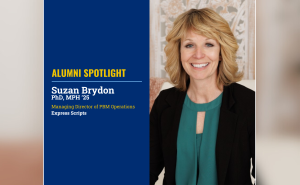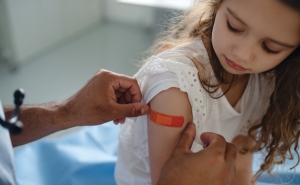Study Reveals Urban Hotspots of High-Schoolers' Opioid Use
Findings highlight the spread of the opioid crisis to adolescents
A new study from researchers at the Johns Hopkins Bloomberg School of Public Health found that in several cities and counties the proportion of high-schoolers who have ever used heroin or misused prescription opioids is much higher than the national average.
The study found that about one in every five white or Latina high school girls in Duval County, Florida, which includes Jacksonville, have misused prescription opioids, while more than 10 percent of Latino high school boys in Duval County and black high school boys in Baltimore, Maryland, have used heroin at least once.
The data used in the study were from 21 cities or counties—20 of which had survey data on heroin use, and 20 of which had survey data on non-medical use of prescription opioids. National data from the U.S. Centers for Disease Control and Prevention show that two percent of U.S. high-schoolers report having used heroin at least once.
The findings, published online in the journal Drug and Alcohol Dependence, are based on survey data gathered in 2017 under the CDC’s Youth Risk Behavior Surveillance System, which includes school-based surveys of U.S. students in grades 9 to 12.
“These figures show that as part of the effort to address the opioid crisis, our public health planning and interventions should consider the needs of young people who have been caught up in the epidemic,” says study senior author Renee M. Johnson, PhD, MPH, associate professor in the Bloomberg School’s Department of Mental Health.
The opioid epidemic in the U.S. began about 20 years ago and has been fueled by the misuse of medical opioids such as oxycodone and fentanyl as well as by heroin use. There were more than 70,000 drug overdose deaths in the U.S. in 2017—about 70 percent of them opioid-related—compared to fewer than 17,000 overdose deaths in 1999.
Results from the study also indicate that some urban areas have much more prevalent heroin use. For example, among ninth to twelfth graders, 12.3 percent of Latino male students in Duval County, Florida, including Jacksonville; 10.9 percent of black male students in Baltimore; and 8.6 percent of black male students in Miami-Dade County reported having used heroin at least once. Overall, male high school students were much more likely than their female schoolmates to have tried heroin.
“Our findings illustrate the complexities of the opioid epidemic, with some cities and subgroups reporting elevated levels of adolescent heroin use also reporting elevated levels of non-medical prescription opioid use while others did not,” says Abenaa A. Jones, PhD, a postdoctoral fellow at the Bloomberg School and the paper’s first author.
Surprisingly, the highest figures for non-medical prescription opioid use were among high school girls—Latina and white female students in Duval County, Florida (21.3 and 19.9 percent, respectively), and Latina female students in Shelby County, Tennessee, which includes the city of Memphis (18.3 percent). Among the surveyed male students, 17.9 percent of black male students in Chicago, and 17.6 percent of Latino male students and 17.1 percent of black male students in Cleveland reported having misused medical opioids. The CDC’s nationwide figures also show that lifetime prescription-opioid misuse is more prevalent among girls (14.4 percent) than boys (13.4 percent).
“It is unusual in drug use prevalence studies to see girls using at the same or even higher rates than boys,” Jones says. “These data speak to the importance of ensuring substance use disorder treatment services address the unique needs of girls.”
The results on the whole suggest that heroin and medical-opioid misuse among high-schoolers is concentrated at much higher-than-average levels in some cities and counties—places which, Johnson says, clearly demonstrate a need for adequate services directed toward treatment for opioid use among adolescents.
“There is evidence from some of our team’s ongoing research that at present the services just aren’t there for young people, even in cities where heroin and medical-opioid misuse is a long-standing problem,” Johnson says. “We need to think more about treatment for this group—and of course aim for prevention.”
“Heroin and nonmedical prescription opioid use among high school students in urban school districts” was written by A. A. Jones, K. E. Schneider, S. Brighthaupt, J. K. Johnson, S. L. Linton, and R.M. Johnson.
The research was supported by the Bloomberg American Health Initiative and the National Institute on Drug Abuse (Grant T32DA007292).
# # #
Media contacts for the Johns Hopkins Bloomberg School of Public Health: Barbara Benham at 410-614-6029 or bbenham1@jhu.edu and Robin Scullin at 410-955-7619 or rsculli1@jhu.edu.





